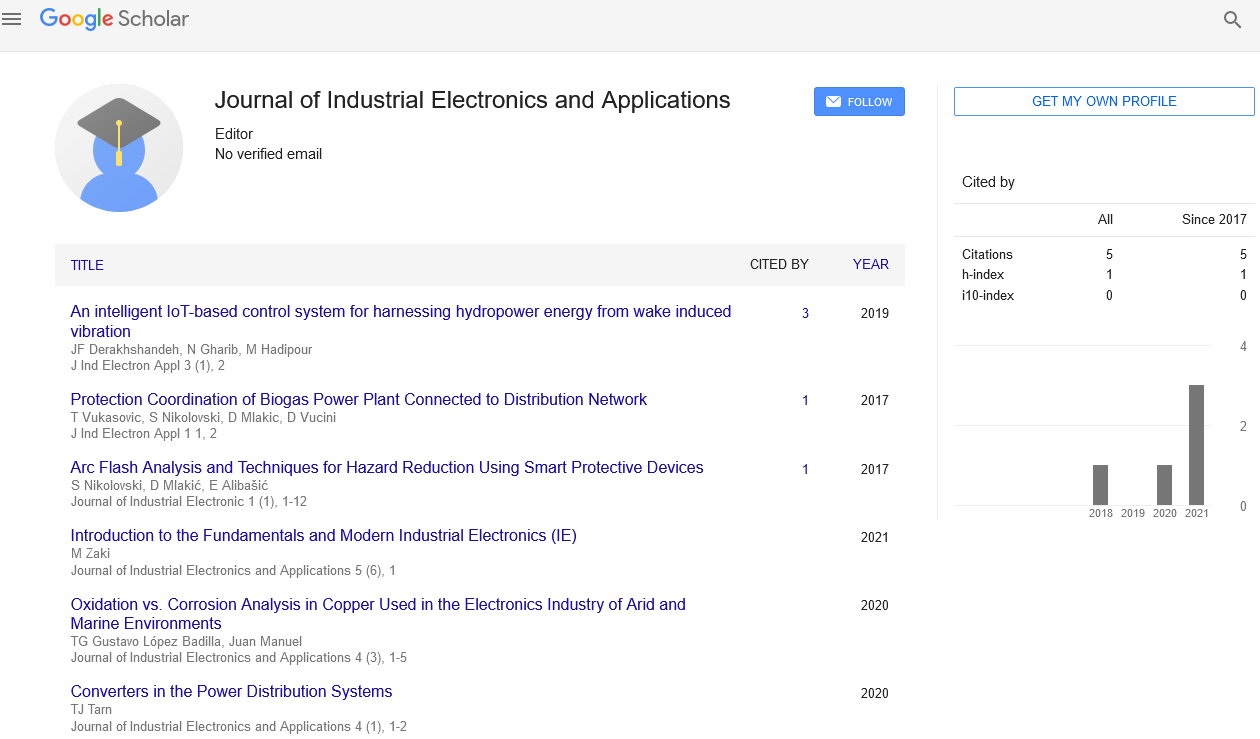Perspective, J Ind Electron Appl Vol: 7 Issue: 1
Advancements and Applications of Signal and Image Processing in the Digital Era
Chen Xhangie*
1Department of Biomedical Engineering, College of Life Science and Technology, Huazhong University of Science and Technology, Wuhan, 430074, Hubei, PR China
*Corresponding Author: Chen Xhangie
Department of Biomedical Engineering, College of Life Science and Technology,
Huazhong University of Science and Technology, Wuhan, 430074, Hubei, PR
China
E-mail: Pouzyh90@hotmail.com
Received date: 24 February, 2023, Manuscript No. JIEA-23-95927;
Editor assigned date: 28 February, 2023, PreQC No. JIEA-23-95927(PQ);
Reviewed date: 13 March, 2023, QCNo JIEA-23-95927;
Revised date: 21 March, 2023, Manuscript No. JIEA-23-95927 (R);
Published date: 30 March, 2023, DOI: 10.4172/JIEA.1000021.
Citation: Xhangie C (2023) Advancements and Applications of Signal and Image Processing in the Digital Era. J Ind Electron Appl 7:1.
Description
Signal and image processing have emerged as powerful tools in various fields, including telecommunications, medical imaging, computer vision, and multimedia applications. In recent years, with the rapid advancement of digital technology and the increasing availability of data, signal and image processing techniques have gained even more significance. This manuscript provides an overview of the latest advancements and applications of signal and image processing in the digital era, highlighting their impact on diverse fields.
Signal and image processing are interdisciplinary fields that involve the manipulation and analysis of signals and images to extract useful information. Signal processing deals with the acquisition, representation, analysis, and manipulation of signals, which can be electrical, acoustic, or any other form of data. Image processing, on the other hand, involves the manipulation and analysis of images, which can be static or dynamic visual representations of data. With the advent of digital technology, signal and image processing have witnessed significant advancements. Digital signals and images are now ubiquitous, ranging from digital audio and video to medical images and social media posts. These digital signals and images can be efficiently processed using various techniques, leading to a wide range of applications that impact daily lives.
Applications of signal and image processing in telecommunications
Telecommunications is one of the key areas where signal processing has found extensive applications. Digital signal processing techniques are used in various aspects of telecommunications, such as signal modulation, coding, error correction, and equalization. These techniques play an important role in improving the quality and reliability of communication systems, ranging from wired and wireless networks to satellite communication and optical communication.
Image processing also plays a vital role in telecommunications, particularly in image and video compression for efficient transmission over communication networks. Image and video compression techniques, such as JPEG and H.264, are widely used in various multimedia applications, including video conferencing, video streaming, and digital television. These compression techniques leverage image processing algorithms to reduce the size of images and videos while maintaining acceptable visual quality, enabling efficient transmission over bandwidth-limited communication channels.
Applications of signal and image processing in medical imaging
Medical imaging is another field that has greatly benefited from signal and image processing techniques. Medical images, such as Xrays, CT scans, MRI scans, and ultrasound images, are important for diagnosis, treatment planning, and monitoring of various diseases and conditions. Signal and image processing techniques are used in medical imaging to enhance image quality, reduce noise, and extract useful information from medical images.
For example, image enhancement techniques are used to improve the visibility of structures of interest in medical images, such as enhancing the contrast of blood vessels in CT angiography or enhancing the details of tumors in MRI scans. Image segmentation techniques are used to separate different anatomical structures in medical images, such as segmenting tumors from healthy tissue in cancer diagnosis or segmenting different regions of the brain in neuroimaging. Image registration techniques are used to align images from different modalities or time points, enabling comparison and analysis of changes over time.
Processing in computer vision
Computer vision is a field that focuses on enabling computers to interpret visual information from the world, similar to how humans perceive and understand the visual world. Signal and image processing techniques play essential role in computer vision applications, ranging from image recognition and object detection to facial recognition and autonomous vehicles.
For instance, image recognition techniques use signal and image processing algorithms to identify objects or scenes in images or videos, which is widely used in applications such as image search engines, automatic tagging of images in social media, and visual surveillance systems. Object detection techniques use signal and image processing techniques to identify and localize objects of interest in images or videos, enabling.
 Spanish
Spanish  Chinese
Chinese  Russian
Russian  German
German  French
French  Japanese
Japanese  Portuguese
Portuguese  Hindi
Hindi 